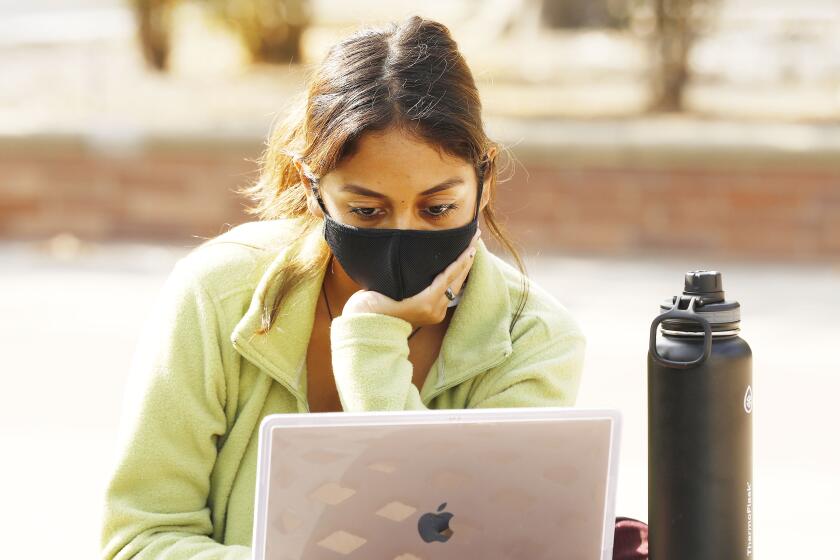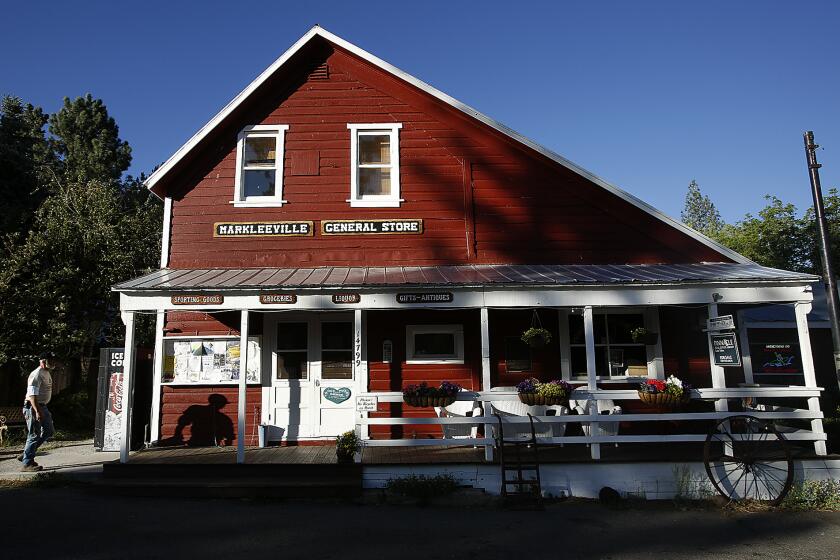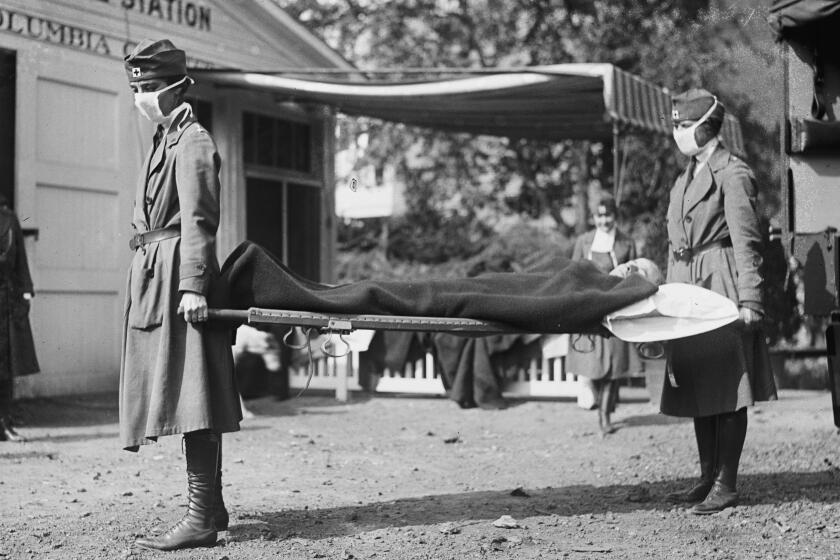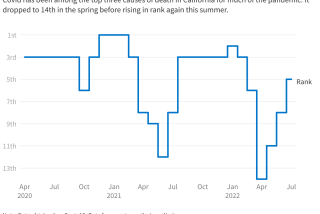Vaccine alters California’s coronavirus path: Urban areas improve, rural parts suffer
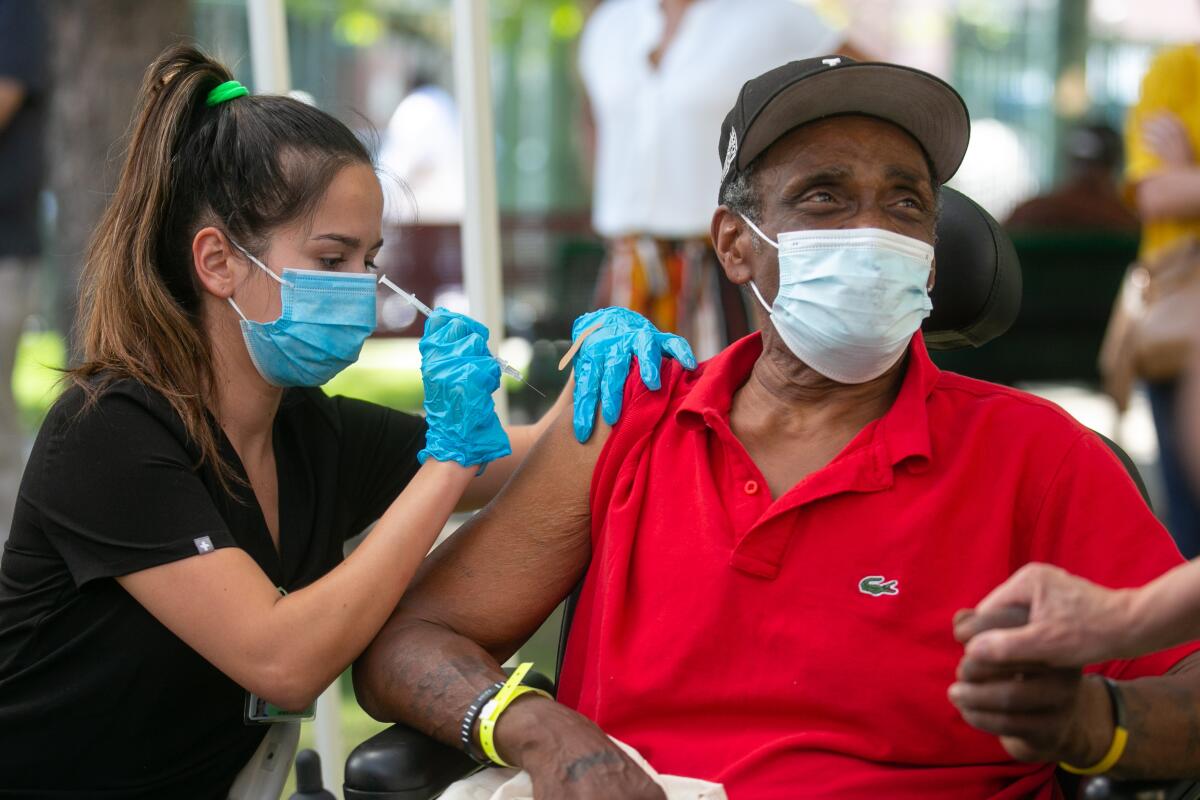
- Share via
Residents in rural California counties with low vaccination rates died from COVID-19 at significantly higher rates during the summer Delta coronavirus variant surge than those in better-vaccinated regions such as the San Francisco Bay Area and Southern California, a Los Angeles Times data analysis has found.
The findings demonstrate how vaccinations reset the recent course of the pandemic and illustrate what health officials have long maintained: that high levels of vaccine coverage better armor a region against the worst of the coronavirus.
Many health officials have endorsed mandating the shots as a condition of employment and, in some cases, recreation in hopes of staving off a potential new surge over the winter.
Los Angeles County has officially implemented vaccine verification requirements at select indoor businesses, including bars, wineries, nightclubs and lounges. And the city of Los Angeles is advancing even more sweeping rules, set to go in effect Nov. 8, that would extend the requirement to indoor restaurants, gyms, shopping malls, movie theaters, hair and nail salons and many other venues.
These targeted vaccination requirements “offer our best hope for getting back more quickly to low transmission and, hopefully, ending cycles of surges,” L.A. County Public Health Director Barbara Ferrer said.
Unlike the fall-winter surge, which devastated Southern California’s denser urban communities, the latest Delta wave hammered the state’s rural and agricultural areas — infecting, hospitalizing and killing residents of some counties at unprecedented levels.
By far, rural Northern California and the San Joaquin Valley have had the lowest rates of vaccination: Only 44% of residents of all ages are fully vaccinated in the north, and 45% are vaccinated in California’s agricultural center.
Both regions have also reported some of the state’s highest rates of COVID-19 deaths for the summer. For every 100,000 residents who live in each region, 33 died of COVID-19 this summer in rural Northern California, as did 22 in the San Joaquin Valley.
By contrast, 13 in Southern California died this summer, and 7 in the Bay Area, for every 100,000 residents who live in each of those areas. Those two regions have the highest vaccination rates in the state: 58% of Southern California residents are fully vaccinated, and in the Bay Area, the rate is 70%.
The analysis adds further weight to what health officials have been saying for months: COVID-19 vaccinations are highly effective, and misinformation spreading about the vaccines’ ineffectiveness is not based in reality.
“The take-home message for everyone is that vaccines save lives. Get vaccinated and save yours and your loved ones’ lives,” said Dr. Robert Kim-Farley, a UCLA epidemiologist and infectious-disease expert.
As of early September, state health officials calculated that unvaccinated Californians were 17 times more likely to die from COVID-19 than their fully vaccinated counterparts.
COVID-19 hospitalizations have dropped by half from the summer peak, as California continues to steadily shake off the worst of the Delta surge.
The Bay Area’s vaccination rates are considered among the highest in the country, and even some risk-averse doctors who abruptly stopped dining out as the Delta surge worsened are now optimistic.
In San Francisco, 75% of residents of all ages have now been fully vaccinated — far above the comparable rate for all of California, which is 60%. And at UC San Francisco’s hospitals, the rate at which asymptomatic people are testing positive for the coronavirus is astonishingly low — 0.4%.
“I’m now OK eating inside in SF. Everyone needs to find their comfort zone. ... I reached mine,” tweeted Dr. Robert Wachter, chair of UC San Francisco’s Department of Medicine.
San Francisco is poised next week to lift indoor mask requirements in settings such as indoor gyms and offices as long as everyone inside is vaccinated.
Santa Clara County reported one of California’s lowest summertime COVID-19 death rates — 5 deaths for every 100,000 residents. It’s quite a feat for the home to Silicon Valley, which recorded the first COVID-19 death in the nation. Both San Francisco and Santa Clara County have erased substantial disparities in vaccination rates by race and ethnicity, an important factor in lowering coronavirus transmission.
“Our public has, by and large, embraced the COVID prevention measures that we’ve talked about and asked everyone to do. And because of that, our rates are fairly low,” said Dr. Sara Cody, the Santa Clara County public health director and health officer. “We have had a fourth surge, but it has been relatively blunted compared to the experience in other parts of the state and country.”
By contrast, counties with the highest death rates have abysmal vaccination rates. In California’s counties with the nine worst COVID-19 death rates, fewer than half of residents have been vaccinated. The county with the worst death rate is Del Norte County, a sparsely populated county of fewer than 30,000 people in the state’s northwest corner, with 91 deaths for every 100,000 residents. Only 39% of residents there are fully vaccinated.
Alpine County, sparsely populated and tucked into the Sierra Nevada, has no hospitals, no ventilators and no ICU beds.
The local medical society has begged residents to get vaccinated. “We will keep working, of course. But we are tired. We are tired of the suffering, pain and death that can be avoided by getting vaccinated,” it wrote. “You’ve trusted us with every other aspect of your health. Please trust us with this.”
Hard-hit hospitals have been so strained that the National Guard was activated to send help in places like Bakersfield and Redding. Fresno County has been forced to transfer some critically ill patients more than 100 miles away because its hospitals have been so full.
Only 50% of residents in Fresno County have been fully vaccinated. “It’s just tragic to see that we’re still seeing patients come in who just didn’t get a chance to get vaccinated, didn’t get the right information, unfortunately got misinformed,” Dr. Rais Vohra, the interim Fresno County health officer, said during a recent briefing.
The U.S. death toll from COVID-19 is now about level with that of the 1918-19 Spanish flu — approximately 675,000.
Throughout the broader San Joaquin Valley, hospitals reported having less than 10% of their cumulative staffed adult ICU beds available for nearly all of last month.
“We know that the number of deaths always mounts, even as the other numbers are falling, and that’s exactly what we expect for this surge,” Vohra said last week. “So I think we are going to continue to add to the number of fatalities, unfortunately, throughout October.”
Southern California’s Delta surge has been nowhere near as bad as the winter surge, but its vaccination rates still need considerable improvement. Los Angeles County has reported that just 60% of its residents are fully vaccinated — the same as California’s statewide rate, and its summertime death rate of 15 deaths per 100,000 residents was close to the statewide rate of 14.
Improving pandemic trends could change “if we don’t maintain momentum on increasing vaccination rates,” said Dr. Christina Ghaly, L.A. County’s director of health services.
Persistent myths about COVID-19 vaccine safety are hobbling efforts to promote the shots in certain parts of California, officials say.
In Orange County, 62% of residents are fully vaccinated, and the county had one of the state’s lower death rates, 9 per 100,000 residents. Of the people who died in August, 94% were unvaccinated, said Dr. Regina Chinsio-Kwong, a county deputy health officer.
“We could have been losing more people to Delta had we not had the vaccination rate that we had, and we see this in other states,” she said during a recent briefing.
Officials in L.A. and Orange counties said vaccination rates still must improve. Chinsio-Kwong encouraged parents and caretakers of children too young to be vaccinated to be especially cautious until their children can get their shot.
In order to enjoy the holidays as usual, “we need to be careful this October,” Chinsio-Kwong said. “So that does mean that, yes, maybe you should change your activity to be outdoors so you have better ventilation. Yes, that means maybe I should wear a mask when I’m indoors, especially even if I’m at a restaurant. I think it’s very sound advice.”
Times staff writer Emily Alpert Reyes contributed to this report.
More to Read
Sign up for Essential California
The most important California stories and recommendations in your inbox every morning.
You may occasionally receive promotional content from the Los Angeles Times.
